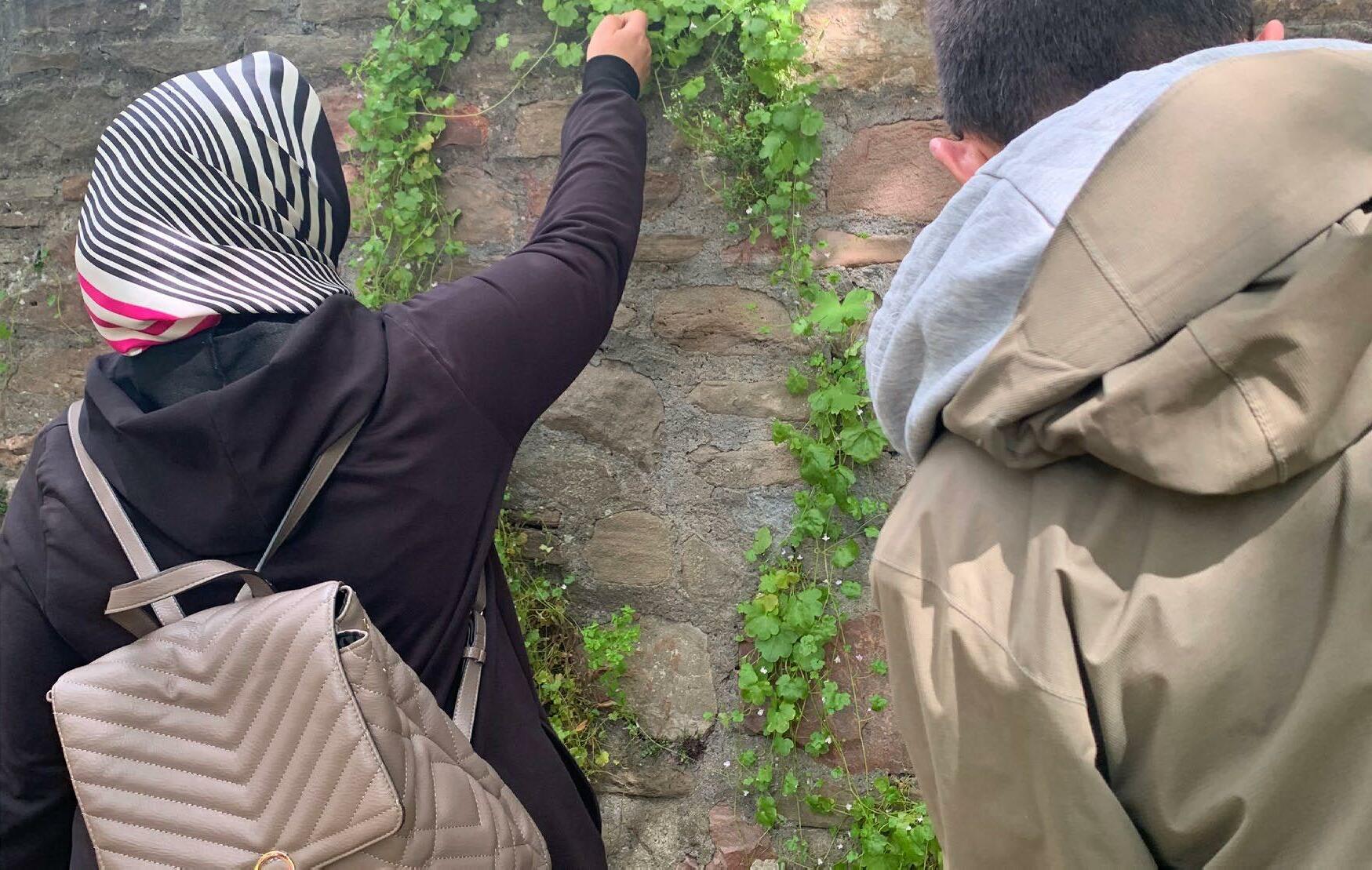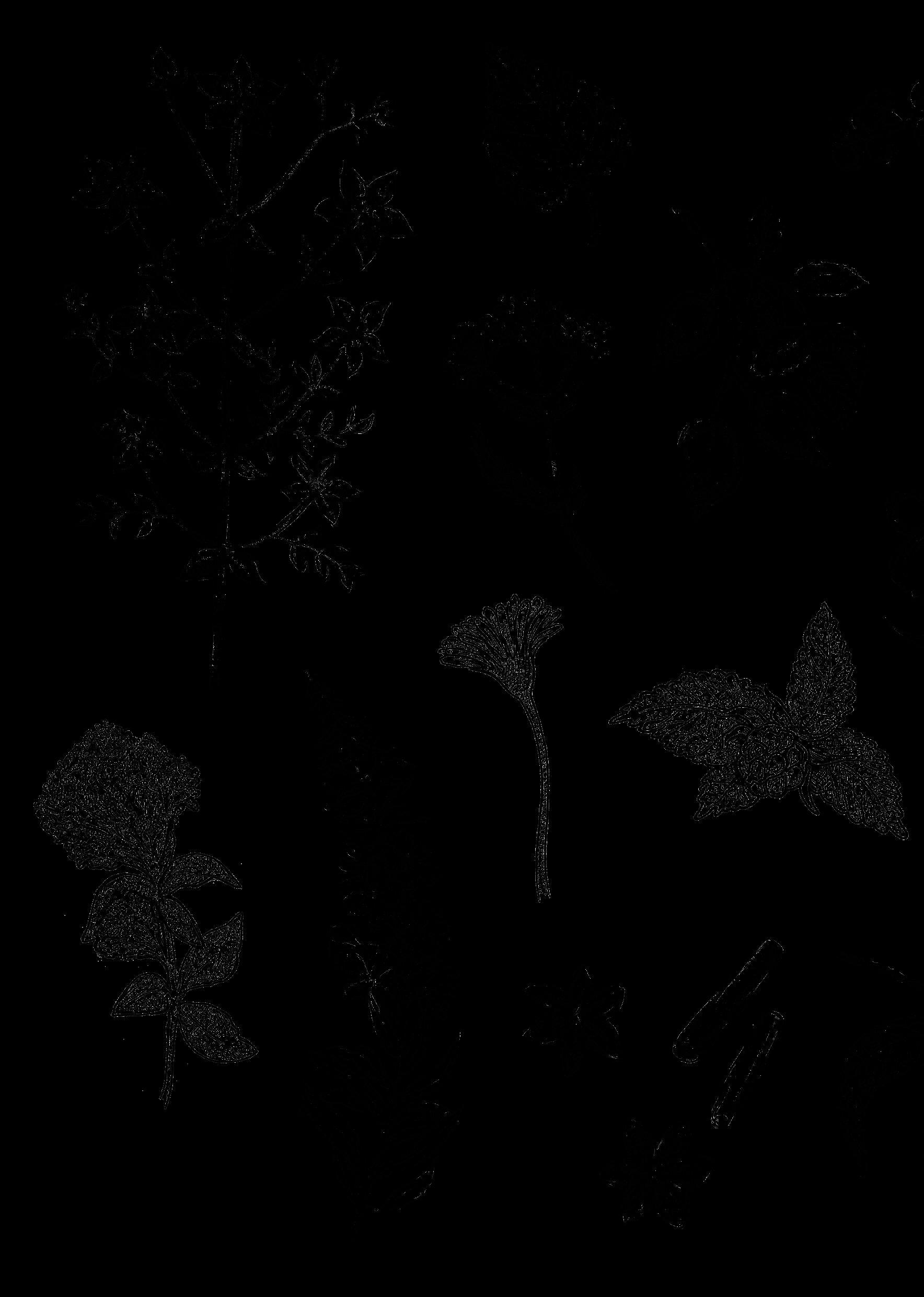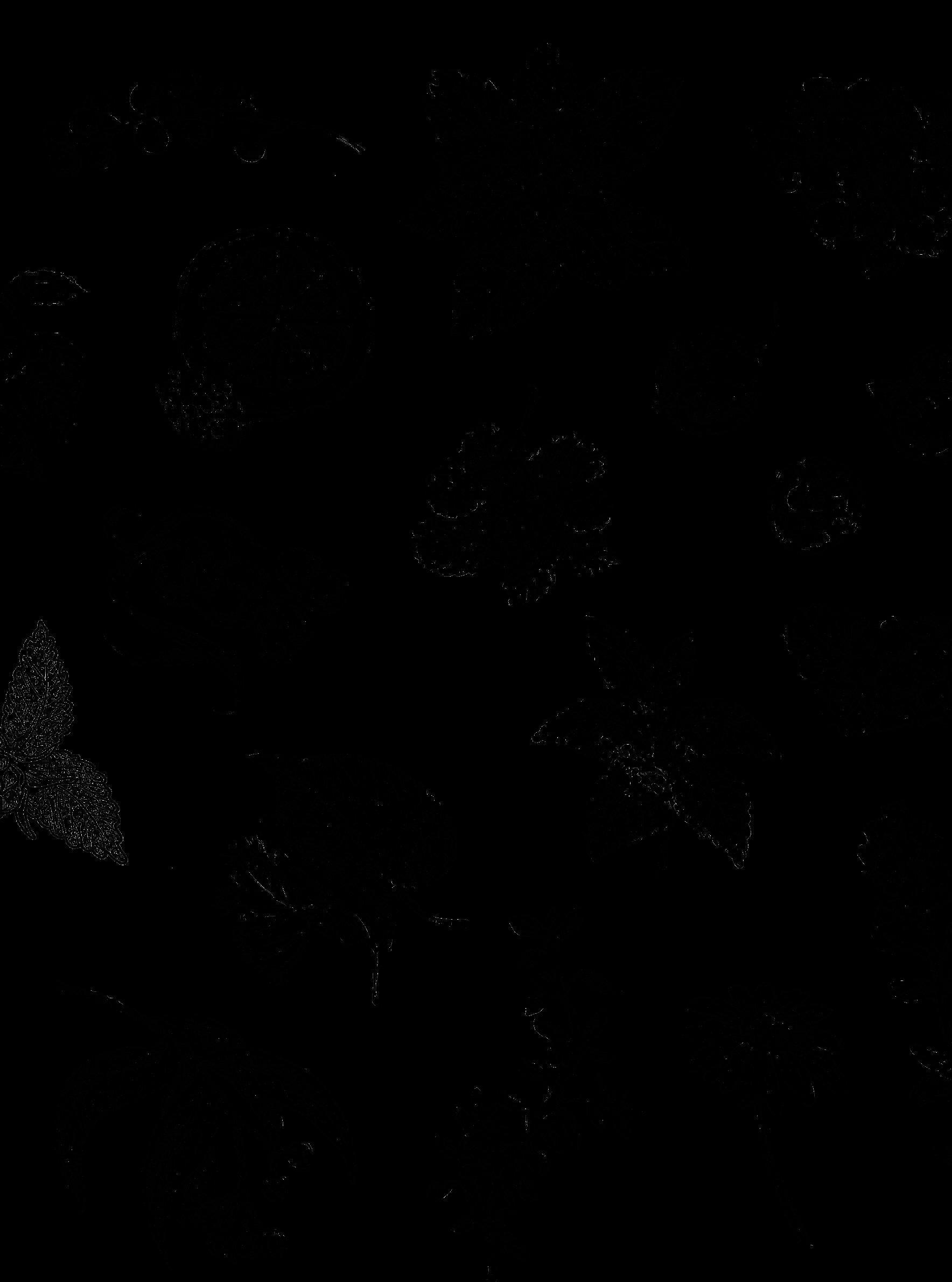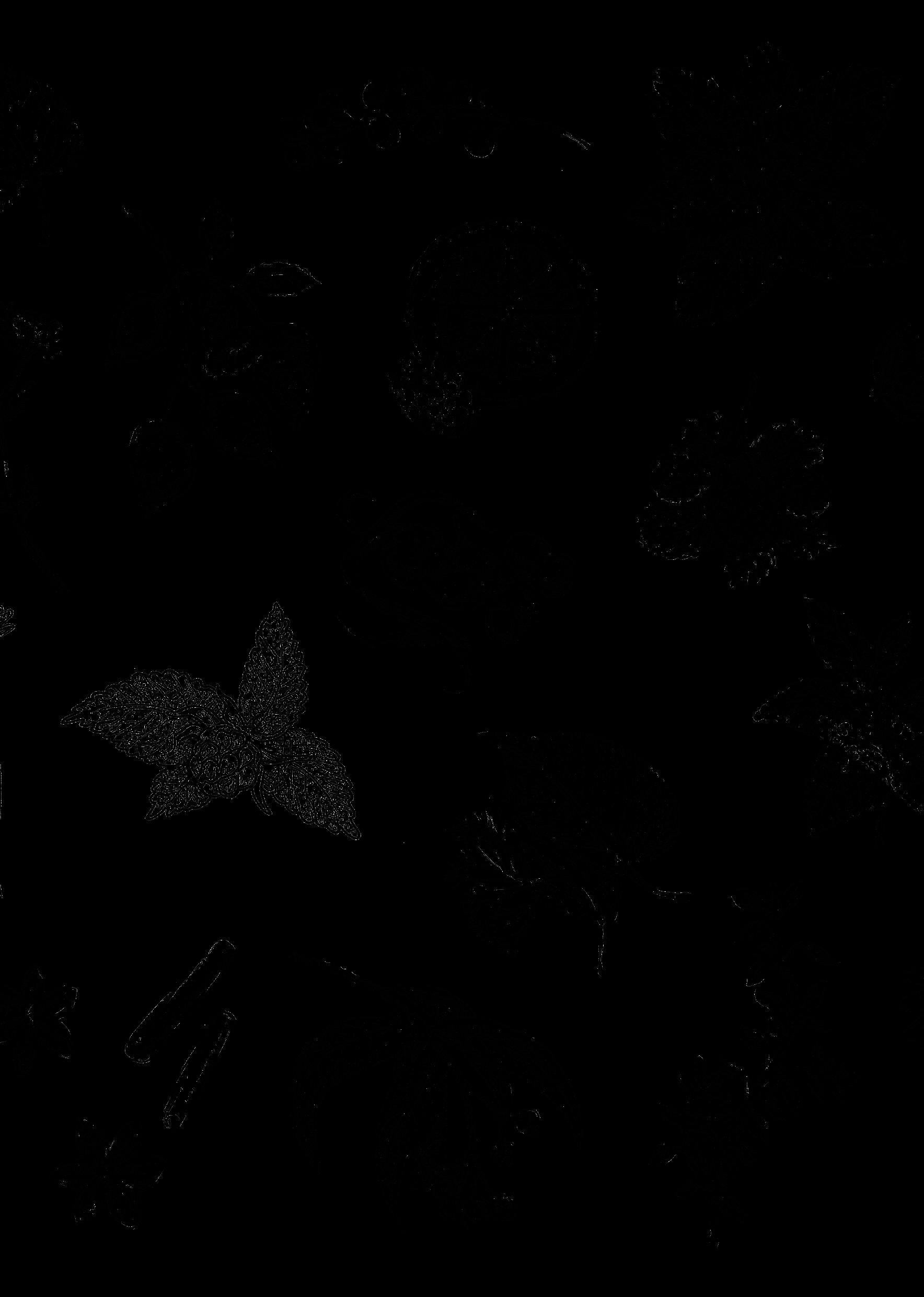Iced Tea Syrup




 Bramble leaf, lemon balm and mint
Bramble leaf, lemon balm and mint
Homemade’s makers now all live in Bristol, but are originally from countries all over the world. The group got together with scholar and cook Fozia Ismail to share stories, associations, ingredients, and recipes from our respective food heritages. Our conversations took place in Bristol Old Vic’s event space Coopers’ Hall, which once stored and sold imported food which came through Bristol’s historic harbour.
Inspired by the group’s stories of tea, we played around with flavours made from ingredients grown and foraged in the local area. Eventually we landed on the perfect combination of Bramble, Lemon balm and Mint. All these ingredients, which grow naturally in Bristol, have been used for centuries all over the world because of their medicinal properties and exciting flavours.
Homemade is now on sale at Kitchen+Bar at Bristol Old Vic, with all proceeds going back to its makers. Head down to the theatre to grab your taste of Bristol.
Homemade is part of a National Lottery Heritage Funded project, which uses heritage as a tool to help foster integration and a greater understanding of Bristol between its newer and older inhabitants. The project is also aimed at developing opportunity, experience and skills for employment for clients of migrant support and integration organisation, ACH.
Turn these pages
follow a journey through our process and Bristol’s corresponding food and drink heritage.
2
DID YOU KNOW? BOXES TO LEARN MORE ABOUT BRISTOL’S HISTORY OF TRADE & COMMERCE SPEECH BUBBLES TO HEAR CONVERSATIONS FROM OUR WORSHOPS 2
Homemade is a brand-new iced tea drink made by Bristol women, using ingredients from the local area.
to
We started meeting as a group in Coopers’ Hall to make and share tea and cakes. Fozia made us Somali tea – Shaah - a spicy and sweet black tea served with milk. Some of the women made us Afghan tea –Chawaa - made with ginger, jaggery, walnuts, fennel and coriander. We served cakes bought from a local bakery in Old Market.

As we drank, we shared stories of drinking tea.

Coopers’Hall


3
Images courtesy of University of Bristol Theatre Collection
Tea Stories

“When we get the period, we used to drink this tea, and when a women give birth, a baby, she drinks this. And when it’s cold. You drink for the pain, and for energy as well”
“When we get period my mum make this for us. In bed, with the blanket over you, watching TV. When the girls get period, and they have a lot of pain, they drink that tea and they relax. Its like a kind of painkiller.”
“When I was child, my mother made me this tea, and I liked it. And “mum, mum!” its very very very delicious. I always say to my mum “make this tea, make this tea” and now I make it, because my mum is in Afghanistan and here I am.
“Now you are mum!”
“My children do not like this, because they are boys.”
“What do they like to drink?”
“Milk, hot water and a little bit of sugar.”
“More women drink this tea then men?”
“Yes! No men, just women.”
“It’s interesting because our tea is imported, it’s not grown here. It comes from other places. Normally teas have medicinal purposes, for health right?
In lots of different cultures in the world. But here, tea was imported, it never grew as part of our culture, it was more of a society thing to do and then it changed and became part of our culture. But it used to be that tea was very, very special because it came to England from far away, we can’t grow it here we don’t have the climate.”

“Do all of the ingredients for this tea grow in Afghanistan?”
“Yes, all of them.”
“So it’s always very fresh”
DID YOU KNOW?
We spoke about Hibiscus, of which Sudan is a major producer. We were told how in Sudan, it is made into hot and cold drinks and used for multiple purposes including fighting colds, moderating blood pressure and treating malaria.
At Bristol Old Vic, we sell a bottled drink called NIX & KIX ‘A Lightly sparkling drink of juicy watermelon paired with antioxidant rich hibiscus, a zing of cayenne and other fruit juices.’
According to newspaper advertisements, imported tea was often sold at auction in Coopers’ Hall to local traders…

In the 19th century, when it began to be used as a warehouse and auction room, Coopers’ Hall would have been a melting pot of different cultures as goods from all over the world, transported via Bristol’s harbour, were stored and sold.
On Friday 16th December 1870, the Western Daily Press reported in its ‘Imports from foreign parts’ that the following goods were imported to Bristol:


“Palm oil and elephants teeth from the west coast of Africa, Sugar from Havanna, Emery stone from Greece, Tallow from Buenes Aires, Wine from
KNOW?
For centuries, Bristol has grown in relation to its ability to trade with the rest
of the world. This has led to shameful chapters in Bristol’s
The city’s leading role in the Transatlantic Slave Trade generated wealth which can literally be seen in the city’s grand Georgian architecture, such as Coopers’ Hall.
Through the trade of products such as tobacco, sugar and cocoa, Bristol’s local

industries flourished and continued to generate wealth long after the slave trade was abolished.
Bristol has a global legacy, and has been perhaps undeservedly (and often without acknowledgment) enriched by its long held connection to people and produce from the wider world.
Newspaper image © The British Library Board. All rights reserved. With thanks to The British Newspaper Archive
5
Attitudes towards migrant food as opposed to migrant people
Fozia Ismail uses food as a platform to talk about politics, identity and colonialism. She asks us to contextualise borders and migration through food identities and heritage.
In her work, Ismail discusses incongruous attitudes towards migrant food and migrant people.
Migrant food has become assimilated into British identity, while the people that history has brought to the UK are othered, and met with a hostile environment. Ismail quotes Start Hall who writes:

“‘I am the sugar at the bottom of the English cup of tea. I am the sweet tooth, the sugar plantations that rotted generations of English children’s teeth. There are thousands of others beside me that are, you know, the cup of tea itself. Because they don’t grow it in Lancashire […]. Not a single tea plantation exists within the United Kingdom. This is the symbolization of English identity – I mean, what does anybody in the world know about an English person except that they can’t get through the day without a cup of tea? Where does it come from? Ceylon – Sri Lanka, India. That is the outside history that is inside the history of the English. There is no English history without that other history. The notion that identity has to do with people that look the same, feel the same, call themselves the same, is nonsense. As a process, as a narrative, as a discourse, it is always told from the position of the Other.”


Stuart Hall, Old and New Ethnicities, quoted in Fozia Ismail ‘A WAY OF SEEING WHICH WE LEARN’: FOOD AS RESISTANCE, The Oxford Cultural Collective, https://oxfordculturalcollective.com/fozia-ismail-food-as-resistance/
Through HOMEMADE, a Bristol drink made from ingredients and people who have migrated here, we want to remind Bristol how food, culture and people cross borders and add layer British culture. The ‘British’ identity owes a lot to migration.
Foraging

As long as people, and animals, have travelled around the world – so have plants.
Over the life span of Bristol Old Vic, the landscape of plant life in Bristol will have changed significantly. When our Anglo-Saxon market town was founded around the bridge at Brygstowe, the area where Bristol Old Vic stands was wet and marshy. As this ground was used for different purposes, such as for markets, sports and cattle grazing, the ecology of the marsh changed with it.
DID YOU KNOW?
You can use Know Your Place - Bristol to explore historical maps, and find out what the area around Bristol Old Vic was like throughout the centuries.

As the marshy environment was gradually replaced by built up areas, roads, factories and houses –it became home to new plants. Many of the flowers found around Bristol’s Floating Harbour arrived from warmer climates such as southern Europe and Asia on boats, in sewage, or via domestic gardens.
DID YOU KNOW?
One thing never changes –stinging nettles! Local Council records from the Tudor period detail payments of money for large quantities of stinging nettles being cut from the Marsh for use in big public festivals. One historian suggested that the nettles were used for some “rough-and-tumble game.” Perhaps our ancestors wrestled on beds of nettles, but we don’t know for sure.
We met with Dave Fung, a local Forager and Chef, to forage for ingredients that grow naturally in and around the Avon in Bristol. The area where Castle Park now stands would have seen huge transformations in wildlife as its architecture changed from castle to commercial route to shopping district to bombsite. Now the park boasts a physic garden for medicinal plants cared for by Putting Down Roots, a St Mungo’s gardening project which provides vocational horticulture training for people experiencing homelessness in Bristol.
“The garden makes me feel very good, very relaxed” Homemade participant

7
If you look over the wall to the Avon at Castle Park, you’ll see ‘Seeds of Change’ a public art installation. It is an old ship hull turned garden, where seeds have been planted that have travelled here – from all over the world – in the ballast of a ship’s hull. Over centuries of Bristol’s history as a port city, ships unloaded ballast along the river which contained seeds from wherever the ship had sailed. Many of these seeds found a new life in Bristol, and can still be found growing today.
“The Floating Ballast Seed Garden was designed to challenge our definitions of what constituted our ‘native landscape’. It raises questions about the point at which species becomes ‘native’, and how we determine our sense of national identity and belonging”

Maria Thereza Alvez, Seeds of Change – Public Art at the University of Bristol,
https://public-art.bristol.ac.uk/temporary-projects/maria-theresa-alvezseeds-of-change

Dave: “This is a bramble plant. It’s very spikey.”
“Spicey?”
“Spikey! Thorns, lots of thorns. The berries turn black, they are very sweet and tasty and we eat them when they are ripe. You can make jam. It’s the plant that most people know and most people will eat some when they are ripe. What berries do you have in Afghanistan?”
“We have red berries, cherries… “ “Cherries are not native to the UK but have been here for centuries.”
Homemade participant
“Picking apples, it makes me feel like being a child!”
8
”
We found (and ate!) so many plants in castle park. Some were native the UK, most were not. Some were brand new to us, but many we used frequently in our own cooking and for medicinal purposes. We rarely found any plants that didn’t grow in each of our countries respectively, including Afghanistan, Britain, Turkey, Sudan and Somalia.
Ground Elder:
An edible plant once introduced and cultivated for its effective treatment of gout, but now considered an invasive weed. Native to Europe and Asia, and introduced to Britain in the middle ages, it is often found alongside rivers and streams.


Ivy-Leaved Toad Flax:
Originally introduced into England via seeds brought in some marble sculptures from Italy to Oxford, records of seeing it in the wild date from 1640, and its abundance has grown along with the architecture of walled gardens.
“It’s sweet, slightly bitter.”
“It just tastes like salad, do you want to try some?”
“It just tastes like salad, it is salad.”
“It’s good”
“Exactly, glad you think so!
Don’t confuse it with real ivy…”
Lemon balm: from North-East Asia: Pineapple weed
Native to southern Europe, its key actions are antiviral, which makes it good for using on cuts, scrapes and wounds. Ancient Romans and Greeks rubbed it on scorpion, spider or dog bites. It’s also been used throughout history as an aid to stress, as an anti-depressant, to promote youth, to ward off colds, as a natural antihistamine and even to promote sweating.
“This is called banana, but it’s a totally different plant. This is a very important medicinal plant. You can make tea out of it.”
“Is it good for congealing your blood?”
“It’s really good for stings and bites as well. So it’s a good aesthetic, anti-septic. Has anyone heard of psyllium husk, for gluten free baking? These seeds come from the same plant.”
“Yes we have this, we use it for constipation.”
“Psyllium husk is really good for soluble fibre.”
“Crush it and sniff it.” “Can you smell this? What does it smell like?”
“It’s like blueberry” “Now you’ve said blueberry it’s all that I can smell.”
Bramble:
An ancient native British plant, found in the bellies of Neolithics and used as the original barbed wire for ancient Britains as well as a medicine for centuries. Blackberry picking is an activity that’s happened for thousands of years, and its medicinal properties are endless. Bramble leaf has strong astringency so it can dry you out, helping such things as mouth ulcers, sort throats, gastrointestinal problems, gingivitis, and bleeding gums. It can also help tighten your skin, and is packed with vitamin C, antioxidants and has detoxifying properties.

We all knew about valerian, and its ability to help you relax and feel calm. The valerian plant is ancient, and features in many fairy tales, myths and legends throughout time. It has also colonised almost everywhere in the world. Reports of valerian use represent much of the known world, from Ancient Greece and China to European apothecaries today.
Spending the day in castle park, eating the plants that grow naturally and sharing our ideas around them, was a highlight of this project.


It got us out and about in nature, connected us to the food we eat that is often more familiar in a package: a tea bag, a branded bottle, wrapped in plastic. Packaging which removes it from where and how it grows naturally, and the stories – both natural and human – behind its present day context.
Yarrow is native to northern Asia and Europe. ‘Achillea’ in ‘Achillea Millefolium’ stands for Achilles, the Greek warrior, who – so a story goes - used Yarrow to stop the flow of blood from the wounds of soldiers. It now has a nickname ‘nosebleed’, as it can stem bleeding if stuffed up the nose.

Yarrow has been used in North America and Europe to treat wounds, diarrhoea, and dysentery. Cherokee would drink yarrow tea to treat fevers, the Chippewa tribe would use the leaves to treat headaches, and it was used as a pain reliever by the Pawnee tribe. Yarrow tea is used in Mexico as an insect repellent or to treat fevers. Ancient Chinese sages also picked random yarrow stalks in order to consult with the oracles of the I Ching. In Ireland, bridesmaids would carry it to weddings for seven years of love.
Achillea filipendulina, also known as fern-leaf yarrow, is a variety native to Caucasus, Iran and Afghanistan.
“I’ve never made tea out of this but this its stonecrop. There’s quite a few different plants called stonecrop. It’s a succulent, and you can eat that.”
“I think we have that in our country as well, we eat them as well.”
“Lots of these plants will be in various parts of the world, including Afghanistan.”

“You tried it already? So you ate in and thought ‘we have that’?”
“I love the way plants do that, with smells as well. You can instantly recognise them.”
“Yarrow is so good and medicinal. Farmers actually plant it because it’s so good for their animals. It’s strong and a little bit bitter, but good”
“Yes in our country we have.”
“Do you use it for animals?”
“We use it for medicines. Yeh yes. We dry that and use it for tea.”
“What do you use it for? What kind of ailment?”
“Its good for a cold.”
Valerian: Yarrow:
Stonecrop:
10



Planting
Following conversations about different ingredients members of the group grew in their home countries, we re-introduced some plants to King Street via our new community greenhouse – a transformed beach hut, made out of 100% recycled materials.

We spent the session planting medicinal herbs that we all use regularly in our cooking, including:


Tarragon, chives, valerian, basil, fennel, arnica, mint, lavender, rosemary and ginger.
Planting the garden was itself a medicinal activity. Putting your hands in soil and connecting with nature was made all the more special by doing it on King Street, disrupting a space where broken glass and the remnants of partying is the usual wildlife.

DID YOU KNOW?
During WW2, bananas were impossible to get in Britain, and almost as difficult to grow. In 1942, a crop of 110 bananas was auctioned at Coopers’ Hall after a local grower had managed to produce them in his hothouse in Brislington. So eager were local people to taste

a banana once more that the auction raised £500, all of which went to charity. People paid more than the equivalent of a week’s wages for a skilled working man for a single banana.
We have big plans to try and recreate this event, and have a go at growing our very own Bristol Old Vic bananas…
The community greenhouse on King Street
While the gardening and greenhouse itself felt disruptive, in many ways it fits in well to the history of King Street.
The Homemade group follow a long line of entrepreneurial women who have made an independent living on King Street
DID YOU KNOW?
In the late 1400s, a rich merchant named Alice Chestre gave £41 for a crane to be built on King Street to help with the unloading of ships, or, as she put it “for the saving of merchants’ goods of the town and of strangers”. Mrs Chestre had gone into business in her own right after her husband Henry died in 1470. Women were not really supposed to be merchants in medieval Bristol, but they often carried on their husbands’ businesses if they became widows.
Alice Chestre was richer than most of them, and carried on trading in cloth, wine, iron and other things with Ireland, Spain and Flanders until she died.
Our very own Sarah Macready managed the Theatre Royal Bristol for twenty years. Her ghost is said to haunt the theatre to this day. Sightings of her all mention the scent of lavender, which we know to have been her scent of choice.
Soon we’ll celebrate her legacy by adorning our foyer with lavender plants grown in our greenhouse.
And finally, Homemade adds to the history of enterprise, innovation and creativity born on King Street....

Our drinks product, designed by women from all over the world, foraged in the local environment, and made according to the principles of a circular economy is King Street’s newest enterprise. Our next step was to design the recipe itself

Bridget Houghton, aged 80, died in 1942 at No. 7 King Street, the house where she was born. Mrs Houghton was a well-known local character who sold second-hand goods from her home. Bristolians of all classes would call in at her “shop” to see what curious objects they could find. Prime Minister Stanley Baldwin even visited once, while the BBC recorded her speaking as “a bit of old Bristol.”
… and a history of incomers to Bristol from other lands (including Wales!) who have found a home and a community on King Street
In the late 1700s the area was very prosperous. The Welsh Back was home to a thriving trade with South Wales and it was common to hear Welsh being spoken in some of the pubs. Many Welsh women ran a busy trade at the Welsh Market, or Goose Market.
Renato Borgnana, one of the most influential figures in King Street in the postwar years, died in 2002. Renato was a legendary and much-loved man whose restaurant and bar became a regular haunt for locals, drama students and famous (and not-so-famous) actors appearing at the Old Vic.
In the 18th Century, there were relatively few Africans living in Bristol; some lived freely and earned a living, while others were enslaved – usually described as “servants” – of rich merchants. We know of a few Africans living in this neighbourhood, one was left £10 a year following his master’s death at his home at 29 Queen Square in 1771.
`Making
“How’s the jasmine, pineapple and chamomile going?”
“We haven’t started that one yet. I was thinking I might just turn that into a sugar syrup”
“Shall we add the sugar with this? The lemon and mint?”
“Oooo smells amazing doesn’t it? This is the Chamomile, Jasmine and Pineapple”
“Do you want to have a taste?
“Oooh noooo” “Not good?
“No, not good.”
“Does anyone want a cup of tea? Normal tea? Black Tea?”
“Are there any more measurements I need to put down?”
“Uumm two bowls of Lemon balm and 2 springs of mint”
“That’s my favourite.” Try this, it’s alright, I like that!”
“We’re going to turn that into a cordial, and then maybe we could use it to flavour a tea. We’ll see, it’s an experiment.”

“Wow so it’s starting to really bubble up. So I’m going to remove this.”
“Ok that smells good. You know the blackberry one has so much vitamin c, it used to be a cure for mouth ulcers. Romans used to use it. It’s really good for you.”
“I think the lemon balm was a bit weird. I think we want to stick to blackberry leaves.” “Wow so it’s starting to really bubble up. So I’m going to remove this.”
“Oh that tastes savoury. Oh I don’t know. Wow. OK I’m not sure. I think it needs… a bit more sugar… Oh my god this is so hard…”
“Do you think it needs black tea? Or shall we just keep it herbal? I’m just wondering whether all of these things would be improved by black tea?”
“More mint?”
“Somali people we don’t drink a lot of herbal tea, only black tea.”
“I want it to get a really deep colours. How long has it been going for? That cooked for about 15/20 minutes.”
“The smell is good. Better than this one.”
The Final Three
LEMONBALM, MINT AND BRAMBLE
This one is so different.
I don’t like this one.
I like it. The smell and the taste, I don’t like it this one. The smell.
It’s good. It’s not bad.
I like this one. I much prefer this one. This one is delicious. This one I can drink.
Maybe just a bit more mint. That’s nice.
The thing is we’re having it hot. Is there any ice?
Let’s do this but try it with ice, see how it works.
Ok, Iced Tea. mmm its good. It’s refreshing
I really do like it.
Minty, lemon balm. It’s not too sweet. I know that taste I just don’t know where. Its blackberry, lemon balm and mint. I know you don’t know what it is but it tastes a bit like wintermelon. You get it in Singapore for like cooling. I love it, I would buy this.

BRAMBLE LEAF AND ANGELICA

Oh that tastes savoury.
Oh, I don’t know. Wow, I’m not sure. Maybe frozen blackberries as well?
I quite like that?
Without so much sugar, its better. Yeh. That’s my favourite. I really like this one! Yeh!
What do you think?
With mint? Put mint in it? You’d have to leave it for a while.
I don’t know, this one has a funny… but maybe that’s just bramble. Its got a funny aftertaste.
I think it’s OK. How is it with the mint? Its more tasty.
Eloise: Is there blackberry leaves in it? A bit, its subtle but I think it really improves it. That will be really nice on a hot day.

LEMONBALM, CHAMOMILE AND PINEAPPLEWEED


This is the chamomile with the pineappleweed, but it’s got no sugar in it. Wow that’s really strong in your mouth. Needs sugar.
I’m going to go less sugar guys what do you think? Ohh noooo Not good? No not good. (this one went down the sink)
Our recipe design session. It was hard, and we found that the sound of ingredients tasted better than the final product. We got there in the end however, and designed the recipe for a gorgeously refreshing herbal iced tea syrup…“OK guys you’ve made your own herbal drink from Bristol!!!”Clapping!!!“Brilliant. Really good.”“Serve with mint from greenhouse, and a tiny slice of lemon.”
We knew where our ingredients came from, their heritage, where they were picked and who picked them. We knew everyone who was involved in the project and the personalities behind the recipe.
At Bristol archives, you can find recipe development from some of the big old Bristol brands such as Fry’s chocolate.
Records of J S Fry and Sons, chocolate manufacturers, of Bristol and Somerdale, Keynsham. December 1770, Vanilla chocolate.



Courtesy of Bristol Archives
Records of JR Phillips & Company Limited, wine and spirit merchants. Production and Salesrecords

Courtesy of Bristol Archives

16
“This was very good when done but I think if there had been 8 ounces more of vanilla it would have been rather more perfect”
16
Reading through the recipes, we were struck by their personality, despite not knowing who – which unknown employee – was behind their development. Crossed out pages, amendments, descriptive language and comments to the reader brought the people who wrote them, whoever they were, to life.
Not even the personality on the page, however, could shed light on the invisible labour behind the food, the centuries of exploitation that Bristol capitalised on to be able to experiment with ingredients such as cocoa and sugar so profitably.

And the same can be said of today. The chocolate bar you pick up from the local shop. The fizzy drink, the ready meal, the fast food. Do you have any idea of where the ingredients came from that made it? How they got here? Whether they are being farmed ethically? Who picked them? What is the hidden labour behind our most popular food products? What is the
Though we are widely aware of the exploitative origins of the chocolate industry, its continuing legacy is less discussed. Mass produced chocolate products still rely on exploitative practices that impact people and environments. Child labour, deforestation, water-shortages and criminally low wages allow us to buy cheap chocolate off the shelf, while the profits of big chocolate companies soar.
The UK food industry also heavily relies on lowwage migrant labour. Food preparation, factory and machine operators employ the highest share of immigrant workers.
Is there a double standard when it comes to the migration of people?
Our partner for this project, ACH, aims to end the cycle of poverty for refugees and migrants.

Negative stereotypes and broken systems mean that 75% of refugees and migrants have no opportunities beyond low-paid, entry-level employment.
Their #RethinkingRefugee campaign aims to re-evaluate and reshape the ways refugees are seen, portrayed and integrated.
Find out more: www.ach.org.uk
17
Branding
Bristol has been at the origin story of many big brands…
FRYS
Fry’s Chocolate is a Bristol brand which is widely accredited with the invention of the chocolate bar, producing the first ever easter egg, and pioneering colour printed labels designed by contemporary artists. Joseph Fry believed chocolate to be a nutritious alternative to alcohol, with medicinal properties.
In 1910 Fry’s were Bristol’s biggest employer, with around 6000 workers and several factories. Throughout the 19th century Fry’s factories were dominated by female workers. At the height of their production, they employed 4,600 staff in Bristol – the majority of which were women. They were known locally as the Fry’s Angels.
Audiences have always eaten during performances, and some of their rubbish is still here. Fry’s Chocolate wrappers were found under the stage during the 2012 renovations.

BROOKES
Brooke & Prudencio Ltd. was a Bristol-based soft drinks manufacturer which operated between 1889 and 1960. The company, founded by Francisco Prudencio and Thomas Brooke, had a large factory on Newfoundland Road in St Pauls, Bristol. Possibly riding off the temperance movement in the UK, the company were early pioneers of non-alcoholic fizzy drinks – and did well with their successful offer of aerated Waters, Fruit Syrups, Cordials and even PG Tips!

RIBENA
Another famous Bristol soft drinks brand. Ribena was invented in 1933 by a University of Bristol scientist as a means of getting children the vitamins they needed. During World War Two, oranges were no longer auctioned in Coopers’ Hall as imported fruit grew sparse. Blackcurrants, which to this day provide much needed vitamin C to Ribena drinking children, could be grown easily and locally.
A Brookes Ginger Beer bottle was found under the stage at Bristol Old Vic during our 2012 renovation. Luckily our current Kitchen+Bar sell some less dusty options such as…
18
Homemade
 by Bristol Women
by Bristol Women




We worked with product designer Tundun Adebanjo to design our final drinks product. With her we went through the following questions:
Target audience? Families, business owners, theatregoers, Bristolians. Our competitors? What sets them apart? What makes brands selling the same thing seem different?
Our Unique selling point (USP)? Its homemade, based in Bristol, grown in Bristol, Halal, vegan, a syrup you can add to different things, a hot drink or a cold drink, made by women, inspired by shared heritage.
Our colour scheme? We decided on green and yellow, to represent lemon and leaves, and then used Pinterest to find a colour scheme for our branding. Our font?
We chose a mix of fonts, deciding to contrast a bold, capitalised ‘HOMEMADE’ with an arty, healthy looking ‘by Bristol Women’ We also decided to write homemade in all the first languages of the people involved in the project, to make it accessible and reflect the ideas and people behind it.

Our name?
Brew, Made by women, Fresh, Ladies, Old Vic, Planting, Freshly foraged, Everyday drink, Drink me, love me, Smoothie, Healthy energy drink, Vitamins, Health, Medicinal, A cure for Bristol, Bristol detox, Detoxifying Bristol, Homegrown, Homemade, Made in Bristol, Home, Homegrown in Bristol, Worldwide women
Our label design? We each sketched our some ideas for the design





20








21
Bristol is at the origin story of many big brands selling products all over the globe. Sadly, mass produced products with global reach rely on exploitative practices that deepen inequality and disrupt ecosystems.
HOMEMADE is representative of a different sort of economy. One where practices and products support the environment and its inhabitants:

Locally Sourced Responsbile Circular



where you consider the environmental...
Fair
Where profit lies in the right hands
where waste no longer exists
where ingredients are found locally

UNSCRIPTED: A performative history of Bristol, Bristolians and Bristol Theatre

2021 – 2024



Homemade is a story from Unscripted, a National Lottery Heritage Fund project that is working with communities in Bristol to produce a performative history of Bristol, Bristolians and Bristol Theatre. The project is working in partnership with the University of Bristol Theatre Collection and Bristol Archives to make local heritage more accessible, stimulate conversations around belonging, identity and Bristol’s history, and celebrate historic connections between our theatre and the people of Bristol.
We will be working in collaboration with communities in Bristol to meet the ongoing need to interpret the past, and to share our understanding of it. With a range of theatrical tools and in collaboration with communities and artists, we will be exploring stories from across the city and their connections to the theatre. This is not only an opportunity to uncover stories from the past, but to challenge the way in which history is told, documented,

This project was made possible thanks to the generosity, support, and hard work of the following:
The HOMEMADE women ACH https://ach.org.uk/ Fozia Ismail https://www.araweloeats.com/ Dave Fung www.littlewildcatering.co.uk Bristol Archives https://archives.bristol.gov.uk/
Eugene Byrne for his research on King Street
All our heritage work is made possible thanks to National Lottery players.
owned and displayed. As part of this project, we want to ask communities how they want to explore and tell their stories – and if or how best we can platform this.
Together, we can explore methods and perspectives on Bristol and its history, something we and our partners can build on, creating a legacy of collaborative, communal Heritage practice. What we tell and how we tell it will reflect the time we are living in, and the change that we aspire to make.

Keep an eye on the heritage activity taking place over the next 3 years, and come and speak to our heritage department if you would like to collaborate, platform a story, or participate in any of the historical exploration going on.
Find out more about our previous National Lottery funded heritage project and building wide heritage interpretation here: https:// bristololdvic.org.uk/heritage
Project designed by Fozia Ismail, inspired by Company Drinks

Booklet design & branding Tundun Adebanjo




 Bramble leaf, lemon balm and mint
Bramble leaf, lemon balm and mint

















































































